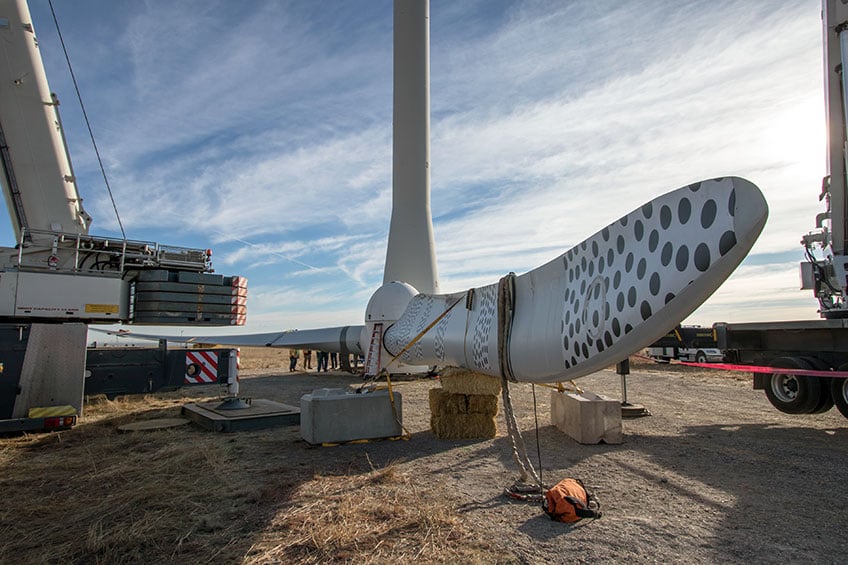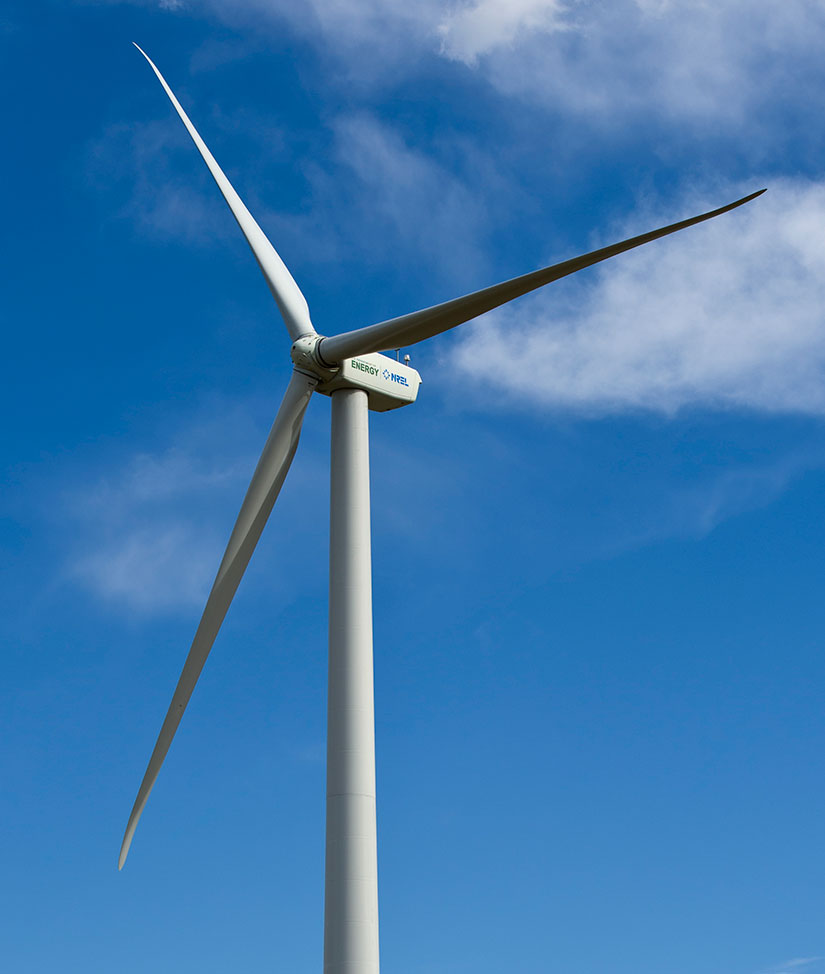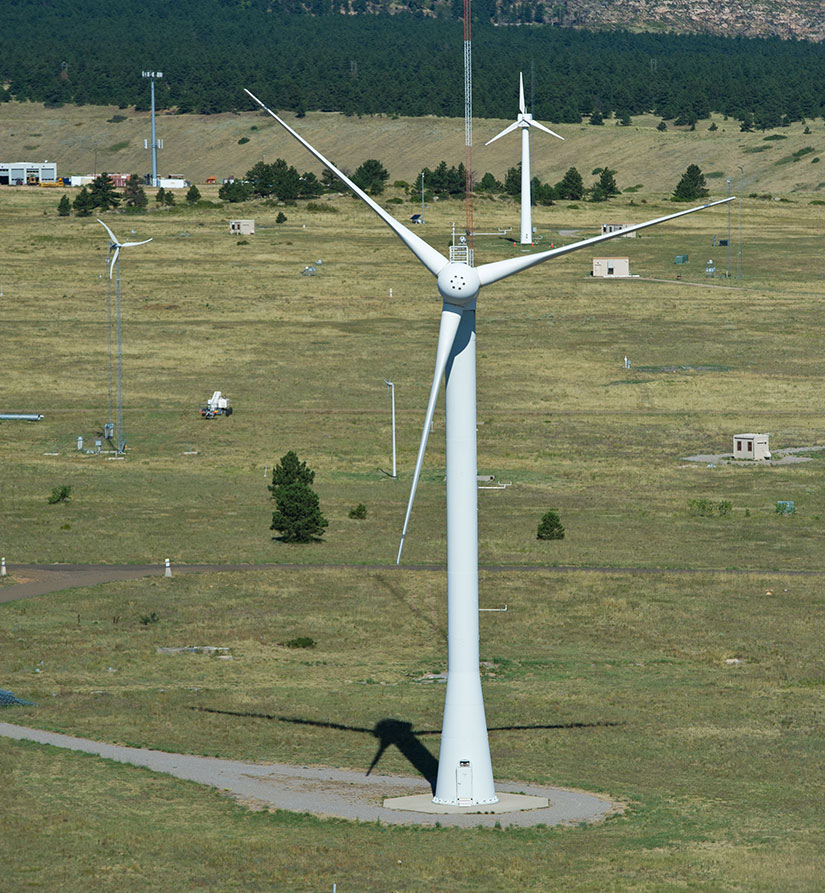Field and Technology Research Validation Sites
NLR offers industry partners the opportunity to use the Flatirons Campus—including its wind turbines and meteorological towers—to develop, demonstrate, and de-risk their technology in a safe environment.
The Flatirons Campus has extensive full-scale field validation and research capabilities that have been used in collaboration with the wind industry to accelerate wind technology development and deployment for more than 30 years.
Utility-Scale Capabilities
Our campus features field research pads scaling from 400 W to 4 MW, expert engineers, and specialized facilities together in one of the best meteorologically characterized research sites in the world. Because the site experiences high-turbulence winds exceeding International Electrotechnical Commission's (IEC) Class I, it is ideal for evaluating wind turbine technology under extreme-event conditions.

Experimental Design and Research Validations
NLR is IEC/ISO 17025 accredited to support the execution of high-quality field campaigns that allow for performance validation under real-world conditions. Our team helps design and conduct field experiments by:
- Assessing research needs to assure the research question is fully understood
- Selecting the appropriate instrumentation to meet the research needs
- Deploying instrumentation with documentation of meta data needed for data analysis
- Collecting data with ongoing data-quality checks and troubleshooting as needed
- Data analysis and visualization.
Infrastructure and Hardware
Met Towers
- Two 135-m and one 80-m met towers
- Research-grade inflow measurements at multiple heights
- Reference for ground-based lidar and sodar comparison
- Characterize atmospheric conditions that affect turbine responses
- Support atmospheric science R&D
- Record the wind speed (sonic and cup anemometers), direction, temperature, humidity, and pressure used to derive wind shear, turbulence, air density, and stability
Megawatt-Scale Research Wind Turbines
U.S. Department of Energy 1.5-MW Turbine

GE 1.5 MW wind turbine
Photo by Dennis Schroeder, National Laboratory of the Rockies
The GE 1.5 is a research platform for wind energy research. The turbine is available for research and development. Examples of past utilization include: de-risking novel wind plant control strategies, demonstrating low technology readiness level wildlife impact detection and deterrent methods, field validation of gearbox models with experimental field data; grid integration research through integration of the turbine with other Advanced Research on Integrated Energy Systems assets (PV, battery storage, synchronous generation, hydrogen electrolyzer, etc.)
- Model: GE 1.5-SLE
- Tower height: 80 m
- Rotor diameter: 77 m
- U.S. Department of Energy owned; used for research and development
- Commissioned in September 2009
Controls Advanced Research Wind Turbine: CART 600-kW Turbine

CART 600 kW wind turbine
Photo by Dennis Schroeder, National Laboratory of the Rockies
The CART wind turbine is a unique research asset that allow quick and safe deployment and validation of novel wind turbine control algorithms. The turbine can be configured as a two bladed or three blades turbine and can run both upwind and downwind.
- Model: Westinghouse
- Blades: 2 or 3
- Hub height: 36.6 m
- Rotor diameter: 42.6 m
Data Acquisition and Results
NLR's capabilities are accredited by the American Association for Laboratory Accreditation to perform the following validations in accordance with international standards:
- Acoustic noise to IEC 61400-11 and Measuring Network of Wind Energy Institutes (MEASNET)
- Power performance to IEC 61400-12-1 and MEASNET
- Mechanical loads to IEC 61400-13
- Power quality to IEC 61400-21 and MEASNET
- Duration testing to IEC 61400-2
- Safety and function to IEC 61400-2 and IEC 61400-22.
Partner with Us
NLR's field research validation sites include experimental laboratories, computer facilities for analytical work, tools and machine shops, office space for industry researchers, and space for assembling components and systems.
NLR offers a variety of ways for organizations to gain access to our wind technology expertise:
- Partner with us through technology partnership agreements.
- Participate in subcontracted wind research through solicitations and requests for proposals.
- Use our cutting-edge research facilities to develop and evaluate wind technologies.
Learn more about working with NLR.
Learn about NLR’s other wind energy facilities.
Contact Us
Share
Last Updated Dec. 6, 2025
